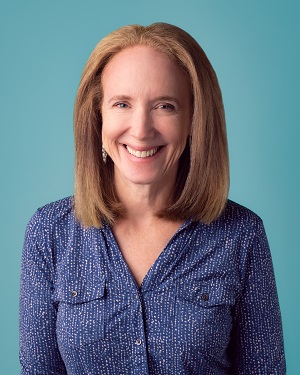In the days of ping pong tables and unlimited paid time off at many large companies, competing on benefits as a retailer seems impossible. Data from the Kaiser Family Foundation’s (KFF) 2022 Employer Health Benefits Annual Survey found that only 39% of organizations with 3-9 employees and 67% of organizations with 10-199 workers offer health benefits. This is compared to 99% for larger organizations.
However, there are options for specialty retailers to not only offer health insurance benefits but also compete in today’s market, utilizing a benefits program called Qualified Small Employer Health Reimbursement Arrangements (QSEHRA). At PeopleKeep, we’ve analyzed companies – and their 20,000 workers – that sponsor these programs. We’ve issued a report on how small businesses use QSEHRAs to offer competitive benefits to employees successfully. Here are some key things we’ve learned from studying the data.
What is a QSEHRA?
A QSEHRA is an IRS-approved health benefit for businesses with fewer than 50 full-time employees. It offers a tax-free reimbursement to employees in all family status categories for their health insurance premiums and other qualifying health expenses. With a QSEHRA, employees select plans in the health insurance marketplace that match their needs rather than trying to fit into a company’s group plan. Employees are reimbursed by their company based on an amount set by the company. A QSEHRA can reimburse other qualified expenses, such as dental, vision and mental health services.
Amounts reimbursed can cover the average silver-level plan
According to the report, overall monthly allowances provided by companies have increased yearly for the past four years to $412, increasing by 39% since 2019. That amount can almost cover the average lowest-cost Silver Premium Plan at $428 for a 40-year-old, according to the KFF.
Companies increase monthly allowances the longer they offer QSEHRAs
The longer a company implements a QSEHRA, the more likely it will offer higher allowances. Companies that have provided QSEHRAs for one year offer an average allowance of $397, while companies after six years of implementation offer an average reimbursement of $448. The data suggests that the more experience employers have with a QSEHRA program, the more they understand its value to employees, how much they can afford to offer and how to maximize the program.
The smallest companies offer the highest allowance
Can even the smallest organizations fund and use a QSEHRA? The answer is yes. Intuitively, it would seem like the larger the organization, the better the reimbursement. But that’s not so. The report segmented companies into four sizes: 1-4, 5-9, 10-19 and 20-49 employees. The companies in the smallest category of 1-4 employees offered the largest QSEHRA allowances compared to other categories, offering an average of $439 per month. The second largest reimbursement is from companies with 20-49 employees at an average of $405 per month. The 20-49 employee category has risen substantially, from an average of $301 in 2019 to $405 in 2022. Companies with 1-4 employees have consistently offered the most over the past four years.
One possible reason for the smallest companies being at the highest reimbursement average could be that they have specific individuals in mind when setting up QSEHRA benefits. Regardless, these companies have offered the most money every year.
What are companies reimbursing – premiums and more
When setting up a QSEHRA, employers can reimburse only for insurance premiums or premiums plus any qualifying out-of-pocket expenses. The latter, identified as premium-plus plans, offers more flexibility for employees in individualizing their benefit needs. Almost every company—99.7%—offers premium-plus programs.
As expected in those plans, reimbursement allowances used by employees covered their health insurance premiums, such as health insurance, and dental and vision coverage. However, only 44% of reimbursements were used for premiums. Employees used 56% of their allotment for other items, such as prescription drugs, office visits, mental health counseling, out-of-pocket dental care and chiropractic visits, rounding out the top five.
Other interesting notes on HSAs and waiting periods
Some additional data from the report show how companies set policies around their QSEHRA benefits programs. First, while QSEHRAs can be coordinated with health savings accounts, only 5% of users implemented this option. There are two reasons why this might be the case: 1) HSA money can be used only for a limited amount of expenses, and 2) the employee must then enroll in a high-deductible health plan.
About 37% of employers impose a waiting period for new employees to join the benefit. A waiting period is a set amount of time employees must wait before they can use their benefits. Some employers do this to align their QSESHRA plan with other probationary benefits.
How your company can use QSEHRAs
A QSEHRA can provide companies with maximum flexibility for their healthcare benefits. It has no minimum contribution limits (although it has a maximum limit), and companies can offer different allowances based on family status. Offering a QSEHRA is completely tax-free for both employers and employees. Most importantly, offering a QSEHRA can fit into many companies’ diversity, equity and inclusion initiatives. Instead of forcing all employees to fit into a one-size-fits-all group plan, a QSEHRA lets employees choose their own health insurance, including additional health services, such as mental health or chiropractic care. In that way, a QSEHRA doesn’t inadvertently discriminate against any group or individual.
The QSEHRA program can help a company be more competitive in today’s challenging labor market. It can make health benefits less of an issue for a prospective employee joining your organization. Knowing how other companies your size use QSEHRAs can help you offer good employee benefits. Since the program is overseen by IRS regulations, talk to your insurance broker or a QSEHRA provider to ensure your program is set up correctly.

Note on the report’s methodology: The data was gathered from PeopleKeep QSEHRA customers and their employees from January 1, 2022, through December 31, 2022. We examined how small businesses across various industries used our platform to provide quality, personalized health benefits. We also reviewed how the employees of these companies used their benefits.
Victoria Glickman Hodgkins is the CEO at PeopleKeep, a provider of award-winning health reimbursement arrangement (HRA) and wellness stipend administration software for small to medium organizations.




